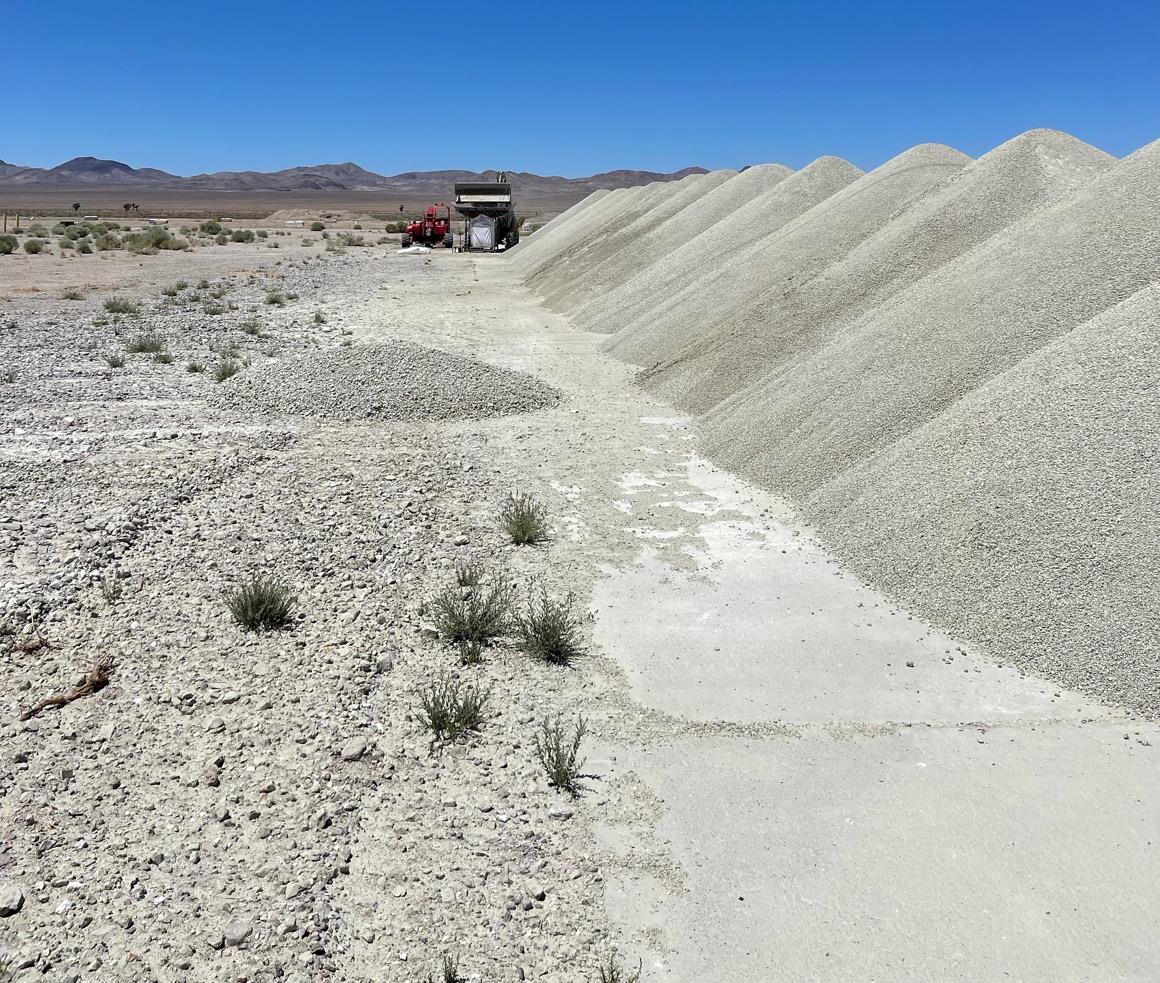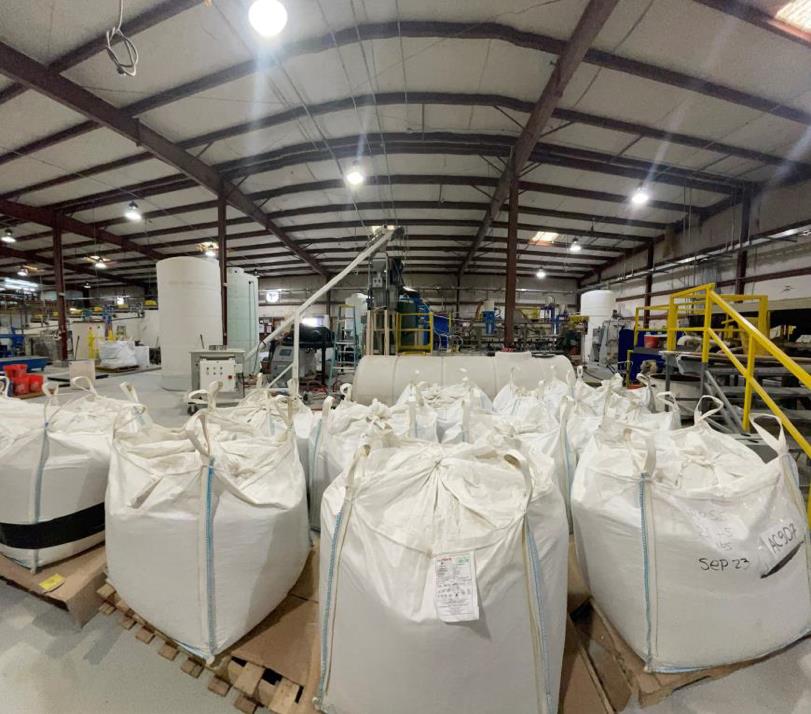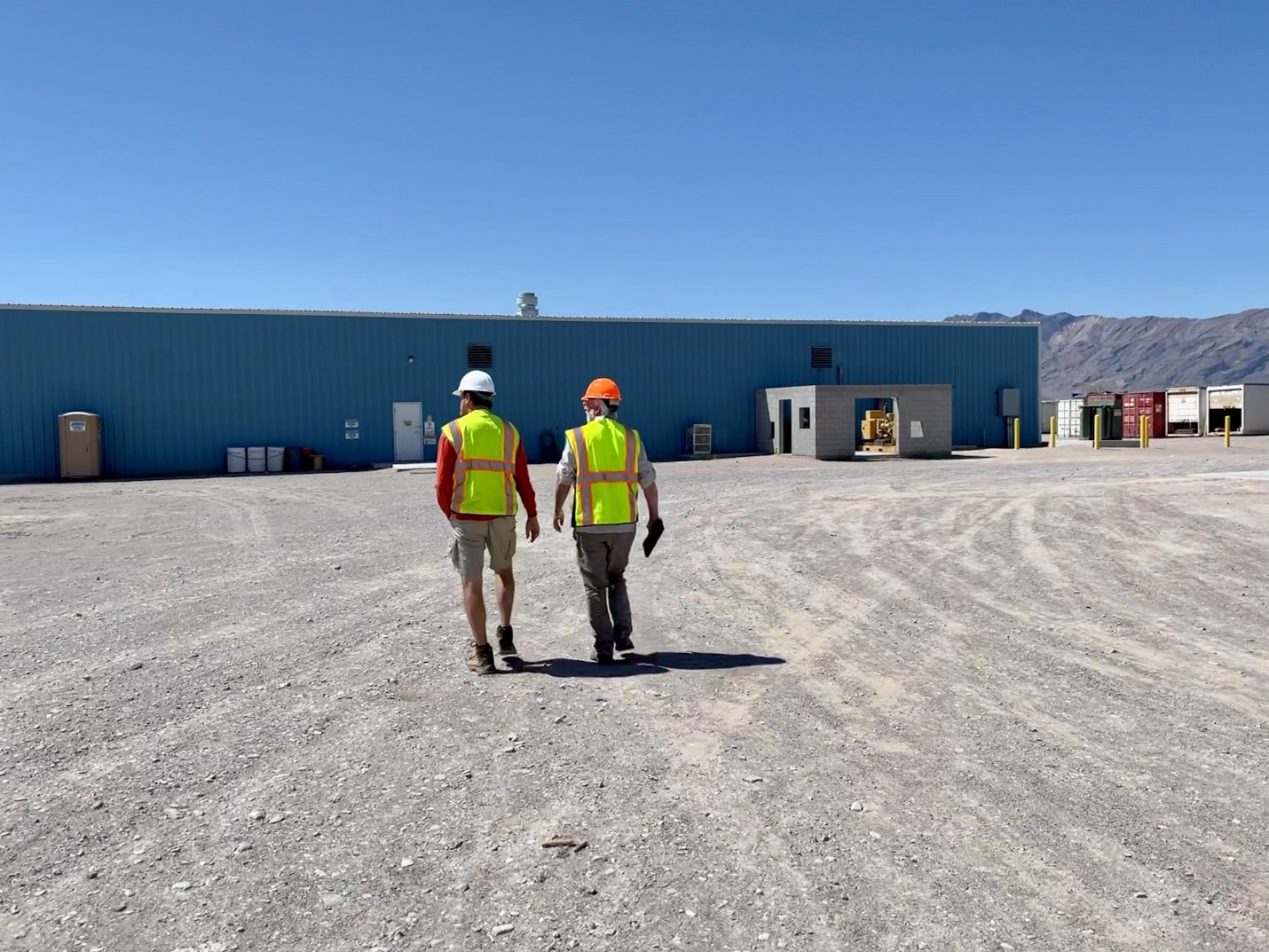Energy & Critical Metals
Strategic Minerals Supply Chain Review
By Luke Holland The demand for critical minerals has become increasingly important due to their…

By Luke Holland
The demand for critical minerals has become increasingly important due to their widespread use in advanced technologies, such as aerospace, defence, computing, telecommunications, and a plethora of clean technologies such as solar panels and electric vehicle batteries. China has become the dominant leader in refining strategic minerals, while the rest of the world struggles to secure domestic supply lines through new mineral discoveries or make alliances with other nations in an attempt to reduce reliance on China. Often it is the case that these alliances are in the third world where critical mineral deposits are bountiful, however lack of proper infrastructure hampers efforts to extract and refine the essential raw materials.
As a matter of national security and in response to China and Russia pursuing further access to strategic critical minerals outside their borders, the US Government designated lithium amongst others as “Critical Minerals” of strategic importance in December 2017 (Executive Order 13817). This order in effect is the USA’s strategy to ensure security and reliable supply lines for these critical minerals. The strategy aims to further reduce reliance on third parties by beefing up supplies favouring domestic sources of these critical raw materials. Canada too has agreed to this, in effect resulting in new discoveries in north America supplying the domestic market.
The critical minerals supply chain can vary depending on the country and its specific needs, but some commonly identified critical minerals include:
- Lithium – batteries for electric vehicles and energy storage systems.
- Cobalt – rechargeable batteries, especially those in electric vehicles.
- Rare earth elements (REEs) – used in a variety of technologies, including magnets, wind turbines, and smartphones.
- Graphite – lithium-ion batteries and other energy storage systems.
- Platinum group metals (PGMs) – catalytic converters for automobiles and in fuel cells for electric vehicles.
- Nickel – stainless steel, batteries, and other applications.
- Copper – electric wiring, motors, and transformers.
- Titanium – aerospace and defence applications, as well as in medical implants and sporting goods.
- Tungsten – manufacturing and construction, as well as in electronic and defence systems.
- Aluminium – transportation, construction, and packaging.
The growing demand for these minerals is predominantly being driven by the global transition towards a low carbon economy, which demands the deployment of clean energy technologies, such as renewable energy sources. Adding to the mass hysteria surrounding this transition, governments around the world have identified several key industries as being the top polluters regarding carbon emissions. The automotive sector, ranking close to poll position, has in some jurisdictions such as Europe been tasked with producing a green fleet, in which by the year 2035, all new vehicles must be net zero emissions. A huge task one might say, but achievable should the supply and security of the necessary minerals uphold. Governments globally are battling with this issue of supply, international markets are becoming increasingly competitive as nations slowly realise the importance these minerals have to play in the short term future of life as we know it.
Currently at the forefront of many jurisdictions critical minerals shortlist is lithium. The battery metal is of high importance due to its crucial role in the lithium ion battery. Presently, this market is headed up by China, owning directly or indirectly 80% of current global lithium resources. This poses a threat to other jurisdictions such as the USA and Europe, with little in the way of domestic supply, these jurisdictions have become reliant on a foreign source for its energy requirements. Some nations have taken proactive approaches to address the issue of domestic supply, such as the UK, who in July of last year, launched a data centre for critical minerals, the sole purpose of which is, to analyse data pertaining to the supply of critical minerals, in particular lithium and cobalt, again key players for the green transition.
The US Government too has endeavoured to establish domestic supply in order to wean off the currently owned Chinese supply lines. The push for domestic sources has materialised in the form of 2017 bill, in which lithium amongst other commodities was designated a “critical mineral of strategic importance”. The US aims to encourage domestic supply lines, by incentivising the identification of these minerals through exploration and mining activities whilst simultaneously reducing timelines by streamlining permitting processes.
Similarly, the EU has put forward a Critical Raw Materials Act, in which the continent outlines a road map on how it shall become the first climate neutral continent on Earth. In this plan the EU too aims to lessen its reliance on the quasi-monopoly that is China for supply, by sourcing its own critical minerals achieved through funding domestic projects. In the recent past, the EU has not been the most welcoming in relation to mining, particularly on the mainland continent, due to the abundant urban sprawl the jurisdiction has seen, leading Europe to be the second most densely populated continent on the planet. However, support in the form of the Critical Raw Material Act is here. Europe is now beginning to realise the importance of domestic mining in the supply chain for these critical minerals. The old adage of “not in my backyard” one might say is finally becoming obsolete.
Elsewhere, other “like minded nations” are chasing homogenous paths, with Japan and South Korea all looking to reduce their reliance on China for supply and beef up their domestic networks by supporting local projects. At present, the supply of many critical minerals is limited, and production is often concentrated in a handful of countries, which raises concerns regarding supply disruptions, price volatility, and geopolitical risks. The need for nations to source domestically is paramount as we, as a whole, transition into the “green world”.
So with the limited supply where are the current critical minerals being produced and by whom? Firstly looking at the lithium market, currently topped by Australia, boasting 53% of the commodity’s global supply, followed by Chile, China and Argentina respectively. Australia, one of the global mining powerhouses, lays claims to several producing and newly emerging lithium deposits. Both mid-tier and large miners have hands in the game, with the likes of Mineral Resources [MIN-ASX] and Pilbara Minerals [PLS-ASX] at the forefront.
Pilbara minerals operate the Pilgangoora deposit, located near Port Headland in Western Australia. The project is one of the largest hard rock lithium deposits globally and is considered strategically important within the lithium global supply chain.
The United States are becoming significant producers of lithium, with Albemarle’s [ALB-NYSE] Nevada based Silver Peak project being the jurisdictions sole producing operation. Presently Nevada, is a hotspot for US lithium. Recently, General Motors announced a US$650 million in Lithium Americas Corp. [LAC-NYSE], the funding will be geared at aiding in developing Lithium Americas Nevada based, Thacker Pass lithium mining project. General Motors’ significant investment in Lithium Americas stands testament to how crucial establishing secure supply is for maintaining industry as the green fleets begin to roll out. In addition to heavy investment from private entities, Government loans and grants are readily available to further incentivise the exploration and mining activities, with Nevada based operations seen to uptake a high proportion of these incentives. This proactive line taken by the US Government, has led Nevada to be ranked as the top jurisdiction globally for investment based on the Fraser Institute’s Investment Attractiveness Index, which rates regions on both their geological attractiveness, coupled with the effects of government policy on attitudes towards exploration investment.
 Hoping to join Albemarle in the production ring is Century Lithium [LCE-TSXV; CYDVF-QTCQX]. Century’s Clayton Valley lithium project located in Nevada, is one of America’s largest lithium deposits, steadily advancing towards production. Situated proximal to America’s sole lithium producer Albemarle, Century looks to be in a prolific region for this critical commodity. Covering approximately 5,500 acres in central west Nevada, boasting a +40-year lifespan, an IRR (Internal Rate of Return) of 26% and a NPV (Net Present Value) of US$1.03B, the project is well on its way to production.
Hoping to join Albemarle in the production ring is Century Lithium [LCE-TSXV; CYDVF-QTCQX]. Century’s Clayton Valley lithium project located in Nevada, is one of America’s largest lithium deposits, steadily advancing towards production. Situated proximal to America’s sole lithium producer Albemarle, Century looks to be in a prolific region for this critical commodity. Covering approximately 5,500 acres in central west Nevada, boasting a +40-year lifespan, an IRR (Internal Rate of Return) of 26% and a NPV (Net Present Value) of US$1.03B, the project is well on its way to production.
To date, the project holds 6.3M tonnes of Lithium Carbonate Equivalent (LCE) in indicated resources, with a further 1.28M tonnes LCE in probable reserves.
In March 2021, a Pre-Feasibility study incorporating sulfuric acid was conducted for the project, key findings of which include:
- Average mine production of 27,400 tonnes LCE annually
- 40-year lifespan
- Net lithium recovery 83%
- Operating cost US$3,387/tonne
- Sales at base rate of US$ 9,500/tonne lithium carbonate
- Capital investment (estimate) US$493M.
- NPV US$1.03B
 The deposit itself is simple, flat lying in nature, with lithium rich clays extending to depths of 150m minimum from surface. The cover sequence is minimal with thin gravels comprising the overburden, thus negating the need for any drill and blast activities, overall lowering the cost of production. Crucial to the project, Century has obtained water rights to the area, an accolade not easily sought, which will be instrumental to the project’s success down the track. The project too boasts the largest lithium pilot plant in the USA, having been functioning for the past 18 months. In addition, Century has commenced collaboration works with Koch Technology Solutions (a Koch Engineered Solutions company), a leader in membrane filtration and ion exchange technologies, to provide engineering design and cost data for the full-scale DLE portion of the processing plant. On top, Koch is focused on further improving the already exemplary recovery of 99.5% within the DLE portion of the Pilot Plant.
The deposit itself is simple, flat lying in nature, with lithium rich clays extending to depths of 150m minimum from surface. The cover sequence is minimal with thin gravels comprising the overburden, thus negating the need for any drill and blast activities, overall lowering the cost of production. Crucial to the project, Century has obtained water rights to the area, an accolade not easily sought, which will be instrumental to the project’s success down the track. The project too boasts the largest lithium pilot plant in the USA, having been functioning for the past 18 months. In addition, Century has commenced collaboration works with Koch Technology Solutions (a Koch Engineered Solutions company), a leader in membrane filtration and ion exchange technologies, to provide engineering design and cost data for the full-scale DLE portion of the processing plant. On top, Koch is focused on further improving the already exemplary recovery of 99.5% within the DLE portion of the Pilot Plant.
Furthermore, last September, Century achieved a significant milestone with the production of enhanced battery grade lithium carbonate (Li2CO3) of 99.94% purity of product made from its lithium-bearing claystone. further increasing the project’s suitability for supplying the EV market.
 Looking ahead, Century plans to execute a Feasibility Study, importantly Century will utilise hydrochloric acid and sodium hydroxide rather than the previously tested sulfuric acid to produce Li2CO3. A crucial change from the 2021 study, which will alter the projects Capex and Opex budgets. This second study is due for release later this year. Following the Feasibility Study, Century plans to complete its Plan of Operation and commence permitting for the project which is located fully within federal land. Current estimates show a 15–18 month timeline, with proactive governmental initiatives streamlining this process. Additionally, following the release of their upcoming Feasibility Study, Century plan to pursue strategic investors to aid in the project’s advancement, similar to what has recently transpired between Lithium Americas and General Motors. At present, global predictions suggest electric vehicles will attain 21% of new car sales in 2025 and further rise to 34% and 48% by 2030 and 2033 respectively. This all bodes well for Century’s Clayton Valley lithium project, continually advancing this project is Century’s top priority, we wait with bated breath to see further developments.
Looking ahead, Century plans to execute a Feasibility Study, importantly Century will utilise hydrochloric acid and sodium hydroxide rather than the previously tested sulfuric acid to produce Li2CO3. A crucial change from the 2021 study, which will alter the projects Capex and Opex budgets. This second study is due for release later this year. Following the Feasibility Study, Century plans to complete its Plan of Operation and commence permitting for the project which is located fully within federal land. Current estimates show a 15–18 month timeline, with proactive governmental initiatives streamlining this process. Additionally, following the release of their upcoming Feasibility Study, Century plan to pursue strategic investors to aid in the project’s advancement, similar to what has recently transpired between Lithium Americas and General Motors. At present, global predictions suggest electric vehicles will attain 21% of new car sales in 2025 and further rise to 34% and 48% by 2030 and 2033 respectively. This all bodes well for Century’s Clayton Valley lithium project, continually advancing this project is Century’s top priority, we wait with bated breath to see further developments.
Stepping out of the lithium arena and delving into the nickel space, we see Canada Nickel Company [CNC-TSXV] and their Crawford Ni-Co project. Located in the Timmins-Cochrane area of Northern Ontario, Canada. The project is a large, undeveloped nickel-cobalt sulphide deposit with potential to become a significant source of nickel and cobalt for the electric vehicle and stainless-steel markets. Canada Nickel’s flagship has a current resource estimate of 263 million tonnes of nickel, cobalt, and iron, with significant potential for expansion. The deposit is hosted in a large ultramafic intrusion that is around 2.7 billion years old and covers an area of approximately 30 km by 15 km. The project contains the 5th largest nickel sulphide resource globally based on Measured & Indicated resources, with nickel demand forecast to grow by 20% in 2030, the push is on to see this project into the development phase. An exciting company and flagship to watch in the medium term.
Lastly, we cross back into the jurisdiction of the United States and look at Highland Copper’s [HI-TSXV; HDRSF-OTCQB] Copperwood Project. Highland’s flagship, the Copperwood project, located in the Upper Peninsula of Michigan, USA. The project is a high-grade copper deposit that has a current resource estimate of 47 million tonnes grading at 1.5% copper. Hosted within a volcanic complex the project has significant potential for expansion both along strike and at depth. Recently, Highland announced an updated Feasibility Study highlighting a robust 17.6% IRR at a copper price of $4.02 per pound. With copper prices set to soar, boasting a fully permitted, feasibility tested project, is a huge asset to hold in storage. Exciting times lay ahead for Highland, let’s see how long they can hold on to their budget value CA$0.095 share price.
The outlook for critical minerals appears strong yet complex, while growing demand for these minerals is likely to continue dominantly driven by the energy transition, geopolitical risks, environmental concerns, and technological developments may all play a part in shaping the future of the critical minerals.
tsxv
nyse
otcqb
asx
lithium
cobalt
nickel
copper
iron
tungsten
titanium
tsx-lac
lithium-americas-corp
lithium americas corp

Uranium Exploration Company Announces Additional Staking in the Athabasca Basin
Source: Streetwise Reports 12/22/2023
Skyharbour Resources Ltd. announced an update from its Canada-based Falcon Project along with additional…
Tesla Launches New Mega Factory Project In Shanghai, Designed To Manufacture 10,000 Megapacks Per Year
Tesla Launches New Mega Factory Project In Shanghai, Designed To Manufacture 10,000 Megapacks Per Year
Tesla has launched a new mega factory…
Giving thanks and taking stock after “a remarkable year”
An end-of-year thank you to our readers, industry colleagues and advertisers before Electric Autonomy breaks from publishing until Jan. 2
The post Giving…
















